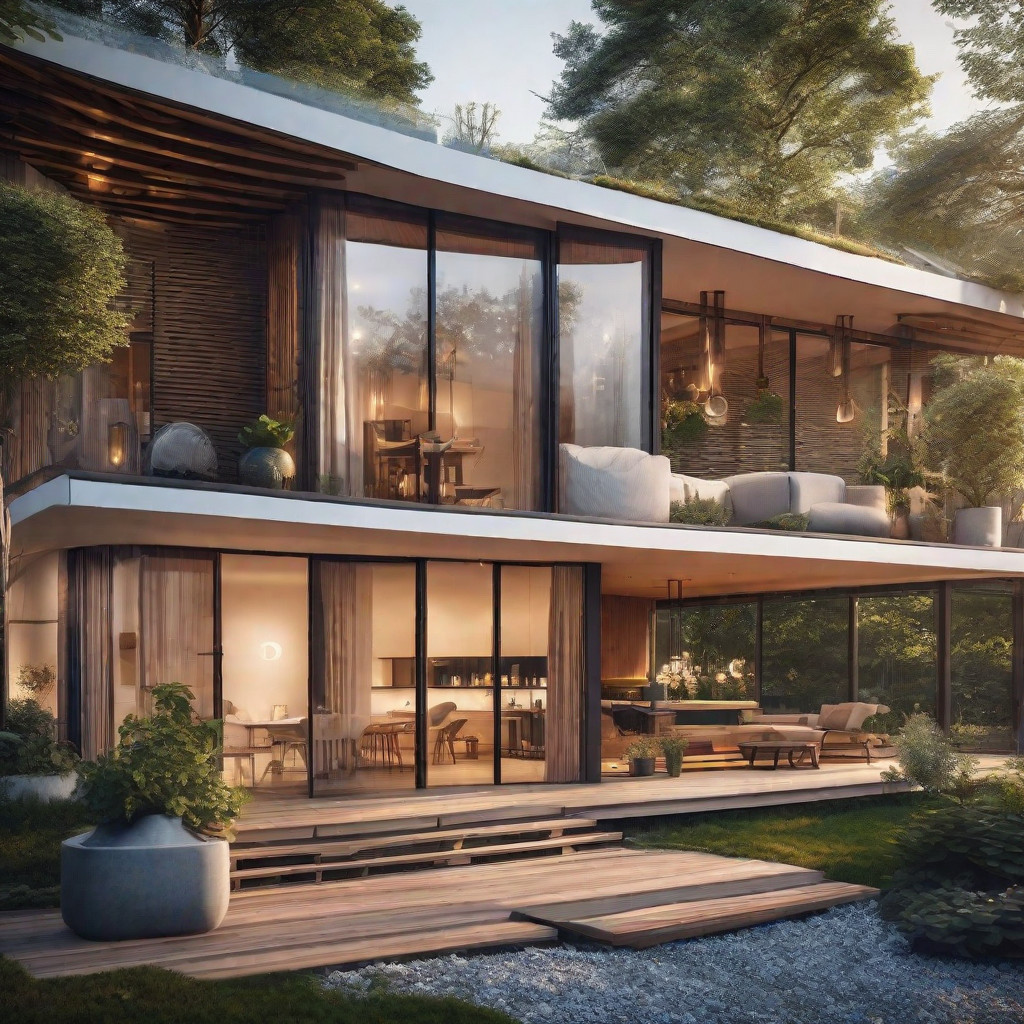
With the increasing concern for environmental preservation and sustainable living, the demand for eco-friendly house designs in India has skyrocketed. As more individuals recognize the importance of reducing their carbon footprint and embracing a greener lifestyle, architects and designers have risen to the challenge by creating some of the best eco-friendly house designs in India.
These innovative structures not only minimize harm to nature but also promote sustainable practices, making them an ideal choice for those seeking a harmonious blend of modern living and environmental consciousness. In this article, we will explore some of the most remarkable eco-friendly house designs in India that epitomize sustainable living at its finest.
1. Green home designs in India
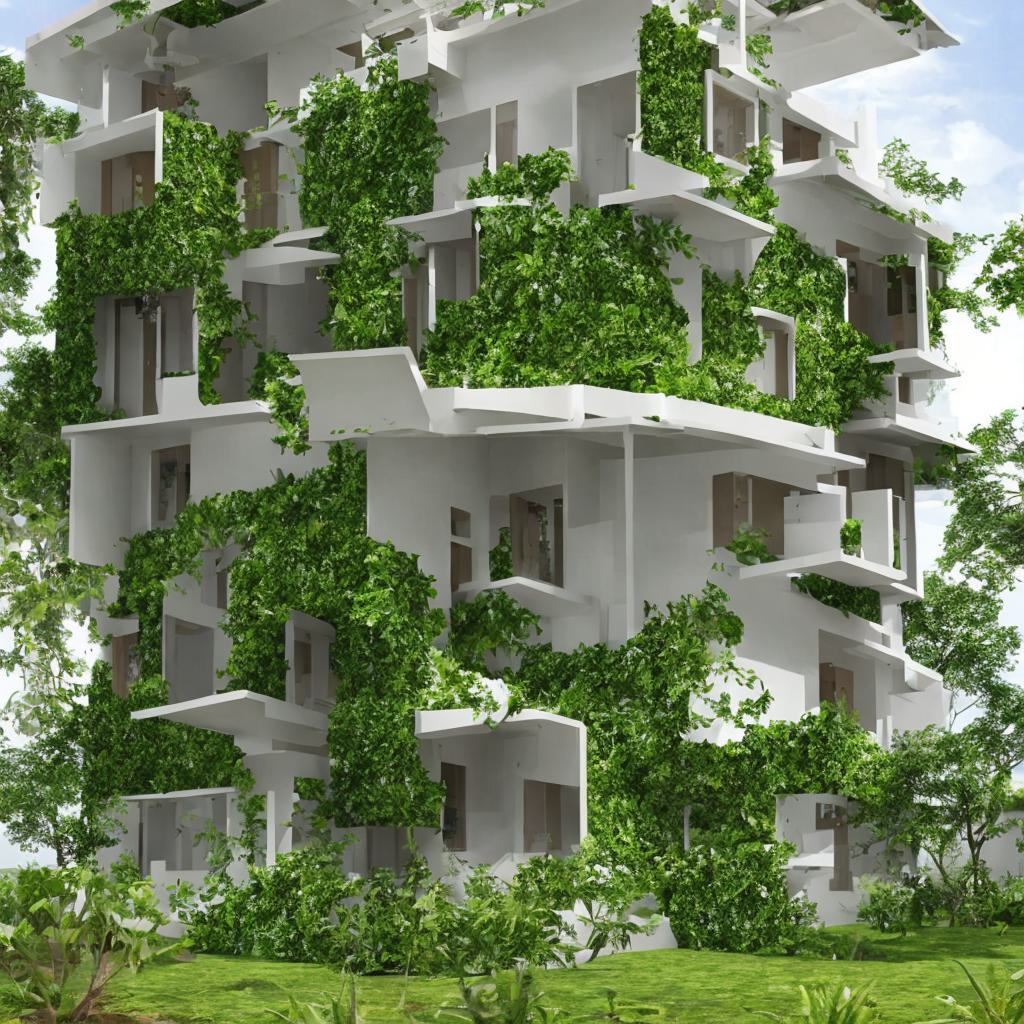
India is making great strides in the field of environmentally friendly architecture, with an increasing number of green home designs being implemented across the country. These designs focus on utilizing sustainable materials and energy-efficient technologies to minimize environmental impact.
One popular trend in green home designs is the use of solar panels to harness renewable energy for power generation. By incorporating these panels into the design, homeowners can significantly reduce their reliance on traditional energy sources and lower their carbon footprint.
Another important aspect of green home designs in India is water conservation. Given that water scarcity is a major concern in many parts of the country, architects are integrating innovative techniques to maximize water efficiency.
This includes rainwater harvesting systems, greywater recycling, and efficient plumbing fixtures that reduce water consumption. Furthermore, green home designs often incorporate natural ventilation and passive cooling strategies to minimize the need for air conditioning systems, thus reducing energy usage further.
Overall, eco-friendly house designs in India showcase a commitment towards sustainable living practices by blending modern technologies with traditional architectural elements.
The incorporation of sustainable materials, renewable energy sources such as solar power, and efficient water management systems make these homes more environmentally responsible while offering comfortable living spaces for residents.
With increasing awareness about climate change and environmental issues, it is encouraging to see such advancements in green home designs across India’s diverse landscape.
2. Energy-efficient houses for best Eco-Friendly House Designs in India
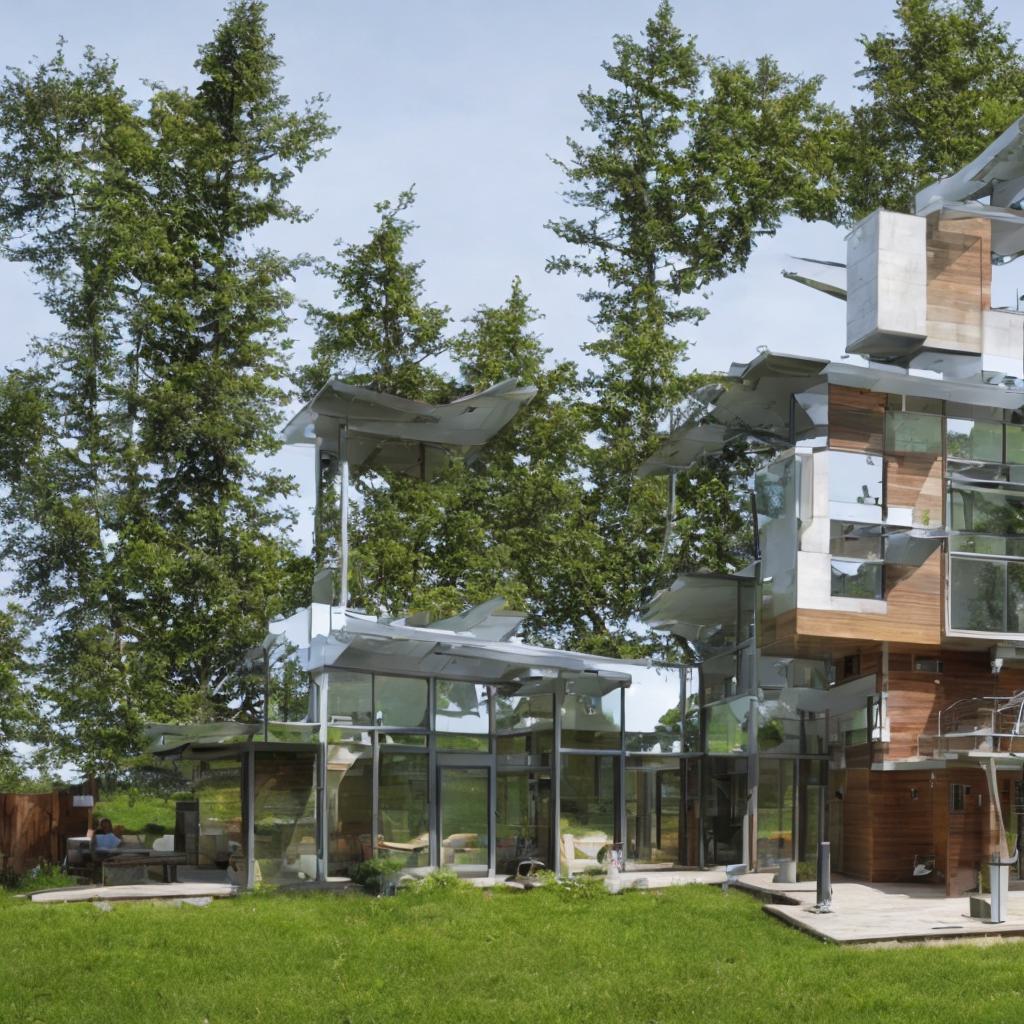
In recent years, the concept of sustainable living has gained significant momentum in India. As the country grapples with rapid urbanization and environmental challenges, there is a growing emphasis on adopting eco-friendly practices in various aspects of life, including architecture and housing design.
In this article, we explore some of the best eco-friendly house designs in India – structures that exemplify sustainable living at its finest. From innovative use of materials to energy-efficient features, these environmentally friendly homes are pushing the boundaries of traditional architecture and setting new standards for a greener future.
Whether you are an aspiring homeowner or simply fascinated by innovative design concepts, join us on this journey as we delve into the world of sustainable houses and their impact on India’s architectural landscape.
3. Sustainable housing solutions for eco friendly home designs
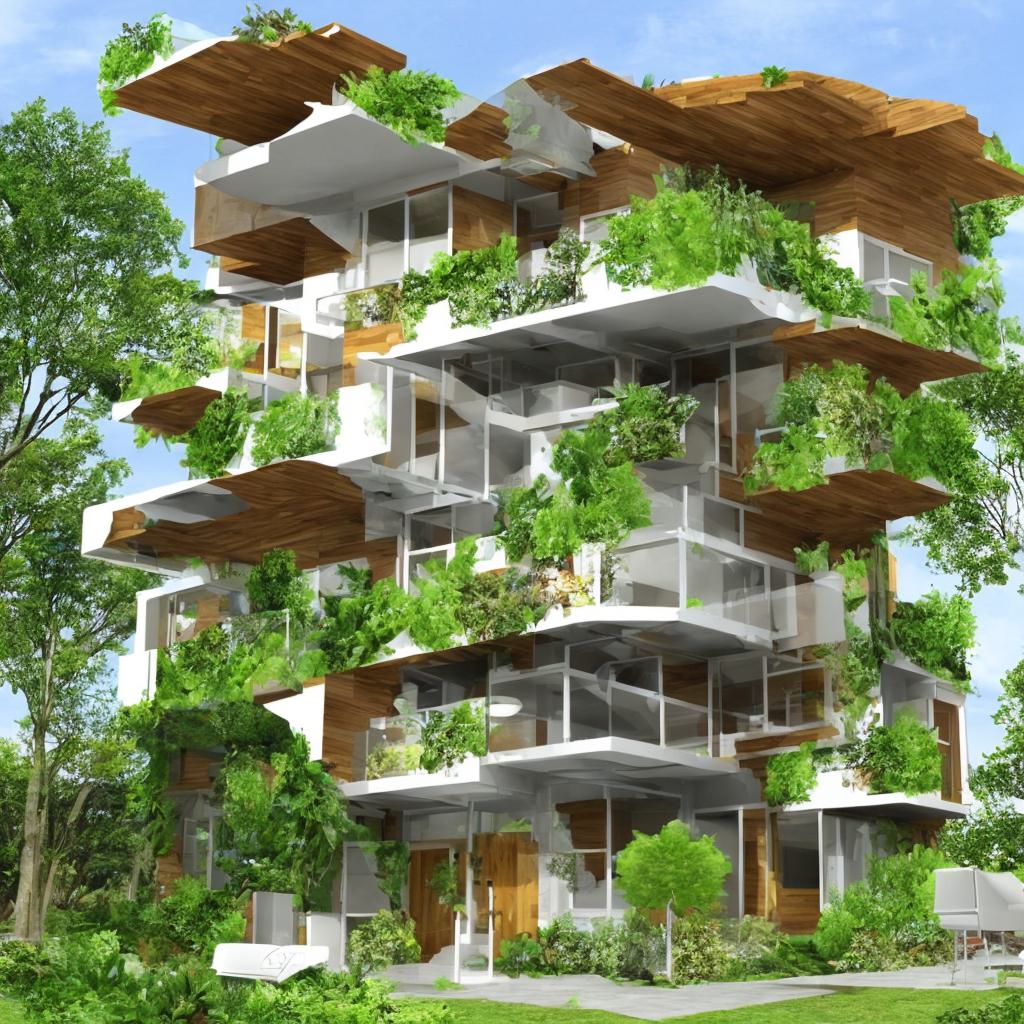
India is embracing sustainable housing solutions with a range of eco-friendly home designs that prioritize energy efficiency and environmental consciousness.
One notable example is the Earthship Biotecture in Puducherry, which utilizes recycled materials such as tires, bottles, and cans to create self-sustaining structures. These houses are designed to collect rainwater, generate electricity through solar panels, and even treat wastewater on-site.
Another remarkable sustainable housing project is the Auroville Earth Institute in Tamil Nadu, where traditional building techniques are combined with modern technologies to create homes made entirely from natural materials like rammed earth and bamboo.
These houses not only have minimal environmental impact but also provide a comfortable living environment due to their excellent insulation properties.
In addition to these specific projects, India has seen an increasing trend towards environmentally friendly architecture in recent years. Many architects are now incorporating passive design strategies such as effective insulation, shading devices, and natural ventilation systems into their designs.
Furthermore, there is a growing awareness of the importance of using locally sourced materials and employing local labor for construction purposes. This not only reduces carbon emissions associated with transportation but also promotes regional craftsmanship and supports local economies.
Overall, India’s best sustainable homes showcase innovative approaches towards eco-friendly design while emphasizing the importance of reducing environmental impact without compromising on comfort or aesthetics.
With continued efforts in this direction, sustainable housing solutions can pave the way for a greener future for all homeowners in India and around the world.
4. Low carbon footprint homes for best Eco-Friendly House Designs in India
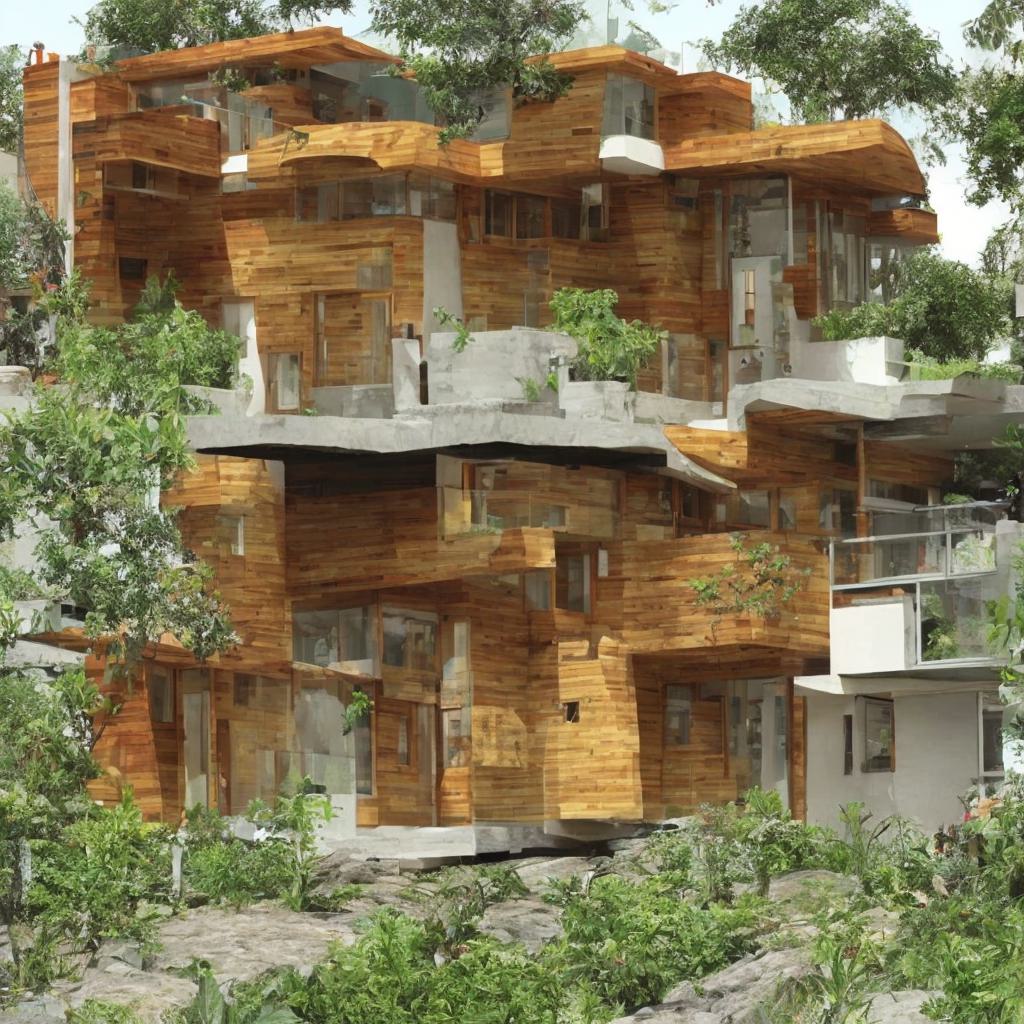
India is witnessing a growing trend in the construction of low carbon footprint homes, as people become more conscious about sustainable living. These eco-friendly houses are designed to minimize environmental impact by reducing energy consumption and utilizing renewable resources.
One popular concept is the use of solar panels to generate electricity, ensuring a constant supply without relying on non-renewable sources. Additionally, these homes incorporate efficient insulation techniques to maintain comfortable temperatures throughout the year, reducing the need for excessive heating or cooling.
Another key feature of low carbon footprint homes in India is rainwater harvesting systems. With water scarcity being a significant concern in many parts of the country, these systems collect and store rainwater for various household uses such as gardening and flushing toilets.
This not only reduces reliance on municipal water supplies but also helps conserve this precious resource. Furthermore, these eco-friendly houses often employ sustainable materials like bamboo and recycled wood for construction purposes, promoting responsible sourcing and minimizing waste generation.
Overall, with their innovative designs and conscientious features, low carbon footprint homes are providing a sustainable solution to address both environmental concerns and the need for comfortable living in India.
As more individuals embrace this eco-conscious lifestyle choice, it is expected that the demand for these best sustainable homes will continue to grow in the coming years.
5. Renewable energy-powered houses for best Eco-Friendly House Designs in India
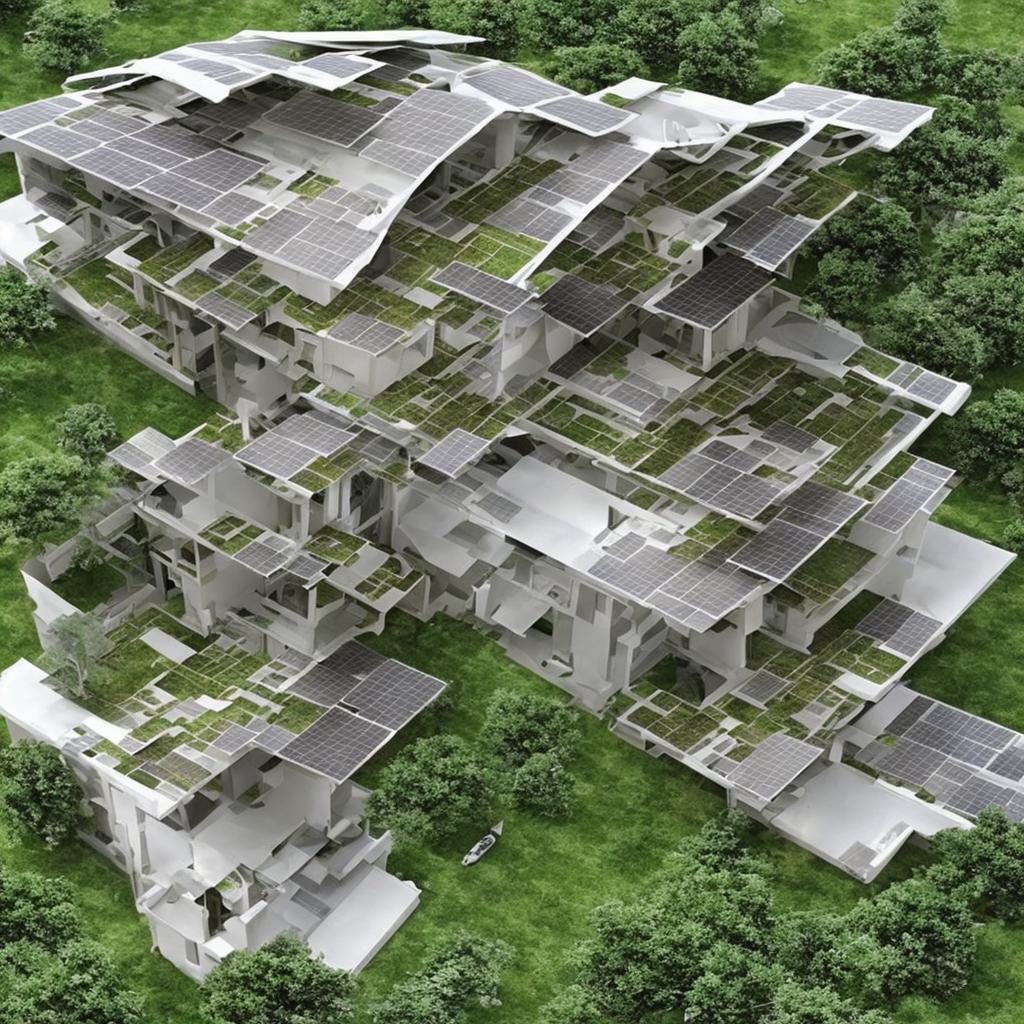
One of the key elements of sustainable living in India is the use of renewable energy-powered houses. With the increasing awareness about environmental issues, many homeowners are opting for eco-friendly house designs that rely on renewable energy sources such as solar power.
These houses are equipped with solar panels that capture sunlight and convert it into electricity to meet the household’s energy needs. Not only does this reduce reliance on fossil fuels, but it also helps homeowners save money on their electricity bills.
In addition to solar power, other renewable energy sources like wind and hydroelectric power are also being used in eco-friendly house designs in India. Wind turbines can be installed on rooftops or in open areas to harness wind energy and generate electricity.
Similarly, hydroelectric systems utilize flowing water to produce green energy for residential purposes. These innovative approaches not only contribute towards a greener environment but also promote self-sufficiency by generating clean and sustainable energy for households.
Environmentally friendly architecture in India focuses not just on renewable energy use but also on sustainable building materials and efficient design principles.
Many eco-friendly houses incorporate features such as rainwater harvesting systems, natural ventilation techniques, and use of recycled materials like reclaimed wood or bamboo for construction.
By adopting these practices, homeowners can significantly reduce their carbon footprint while enjoying a comfortable and environmentally conscious lifestyle.
6. Bioclimatic architecture for sustainable living in India
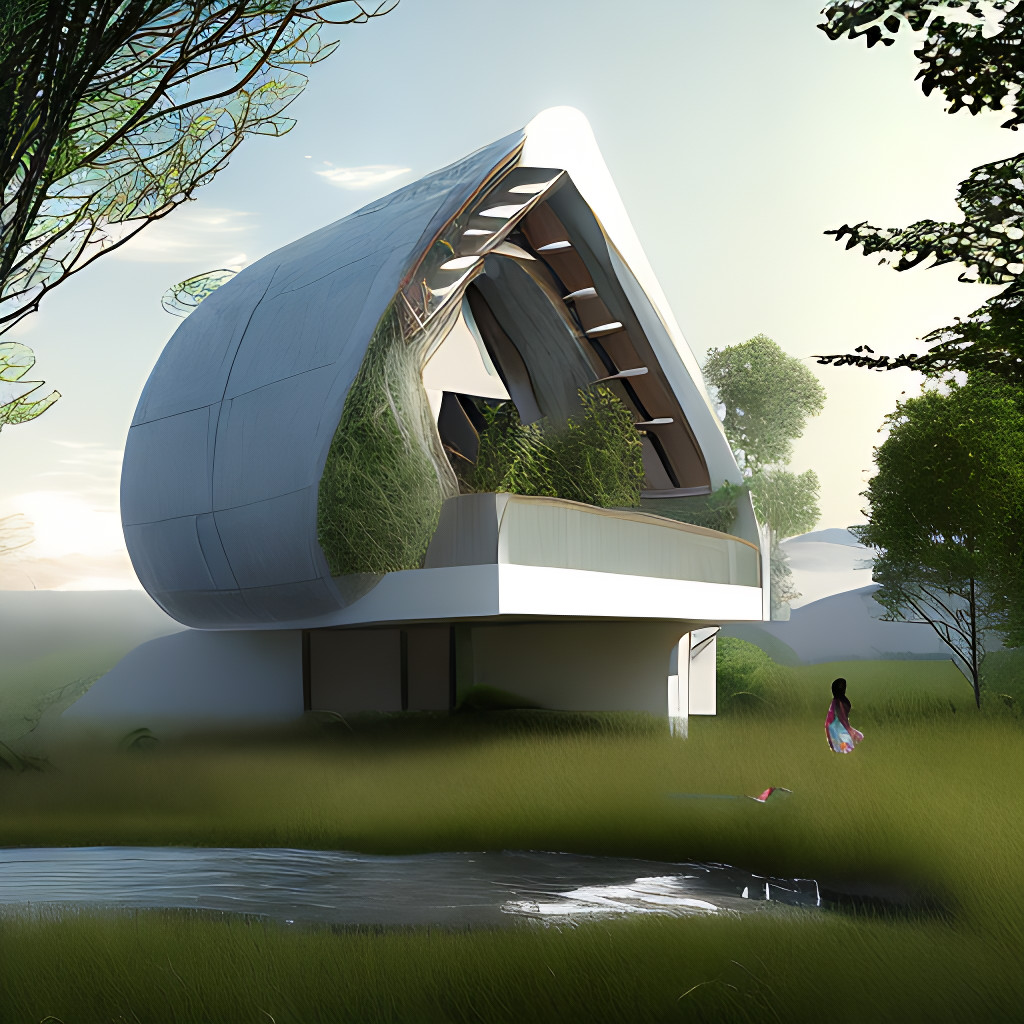
Bioclimatic architecture plays a crucial role in promoting sustainable living in India. The country’s diverse climate calls for innovative designs that can provide comfortable living conditions while minimizing the environmental impact.
One of the best sustainable homes in India is the Eco-Habitat in Bangalore, which incorporates bioclimatic features such as natural ventilation, rainwater harvesting, and solar energy systems. This design not only reduces energy consumption but also enhances thermal comfort throughout the year.
Another remarkable example of eco-friendly house design in India is the Earth House located in Alibaug. Built with locally-sourced materials and powered by renewable energy sources, this bioclimatic home blends seamlessly with its surroundings while minimizing waste generation and carbon footprint.
Its strategic orientation allows for ample daylighting and natural ventilation, reducing dependence on artificial lighting and air conditioning systems.
Overall, bioclimatic architecture offers a solution to achieve sustainable living in India by harmonizing human needs with nature’s resources through innovative designs that prioritize energy efficiency, resource conservation, and minimal environmental impact.
7. Water conservation systems for eco-homes in India
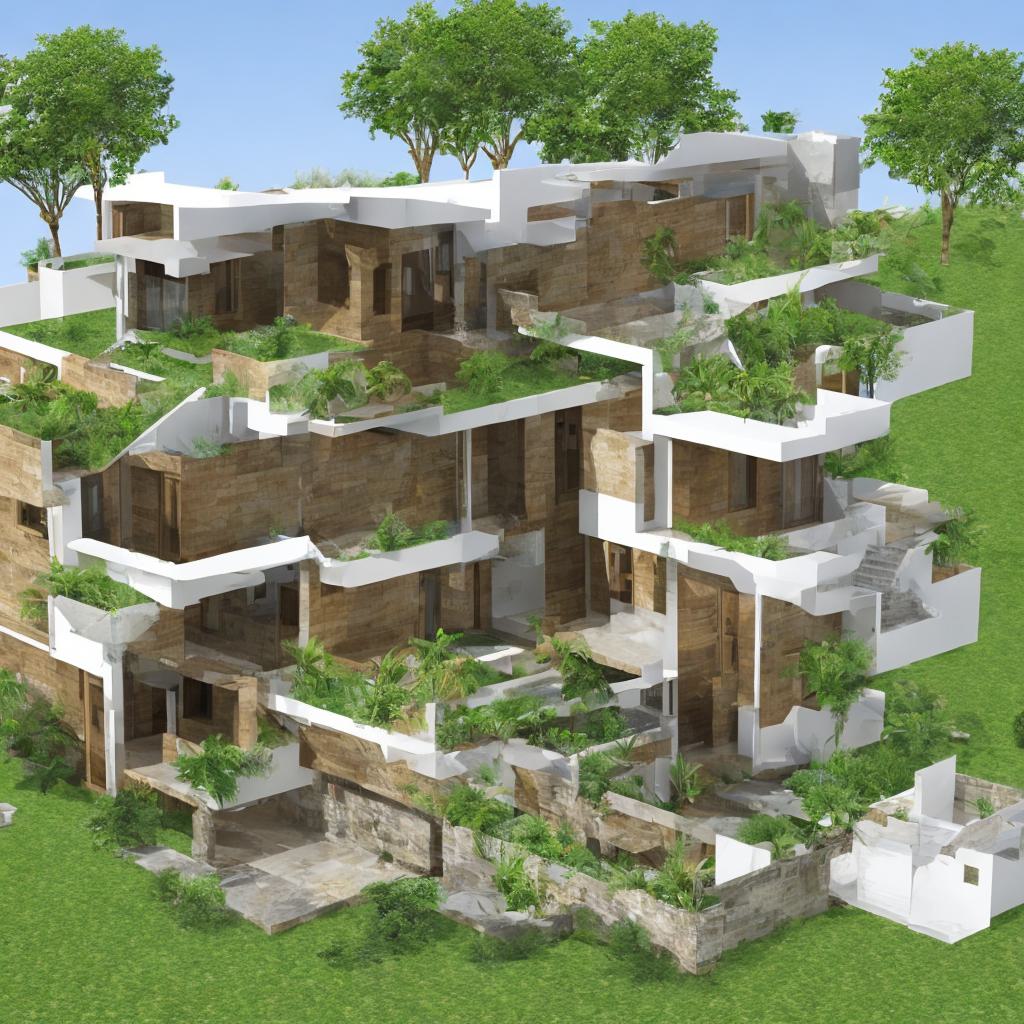
Water conservation systems are an essential component of eco-homes in India. With the country facing water scarcity issues, it is imperative for sustainable living practices to be integrated into residential designs.
One such system is rainwater harvesting, which involves collecting and storing rainwater for various purposes like irrigation and household use. By implementing this system, eco-homes can significantly reduce their reliance on municipal water supply, thereby alleviating the burden on natural resources.
Another crucial aspect of water conservation in eco-homes is greywater recycling. Greywater refers to wastewater generated from activities like bathing and washing dishes, which can be treated and reused for non-potable purposes such as toilet flushing or gardening.
By incorporating a greywater recycling system into their design, eco-homes can minimize water wastage while also reducing the strain on sewage treatment plants.
In conclusion, environmentally friendly architecture in India emphasizes the integration of effective water conservation systems within eco-homes.
Rainwater harvesting and greywater recycling are two key strategies that contribute to sustainable living by reducing dependence on scarce water resources and promoting responsible usage.
These practices ensure that best eco-friendly house designs in India prioritize not only energy efficiency but also wise water management for a more sustainable future.
8. Vertical gardens and green roofs for sustainable houses
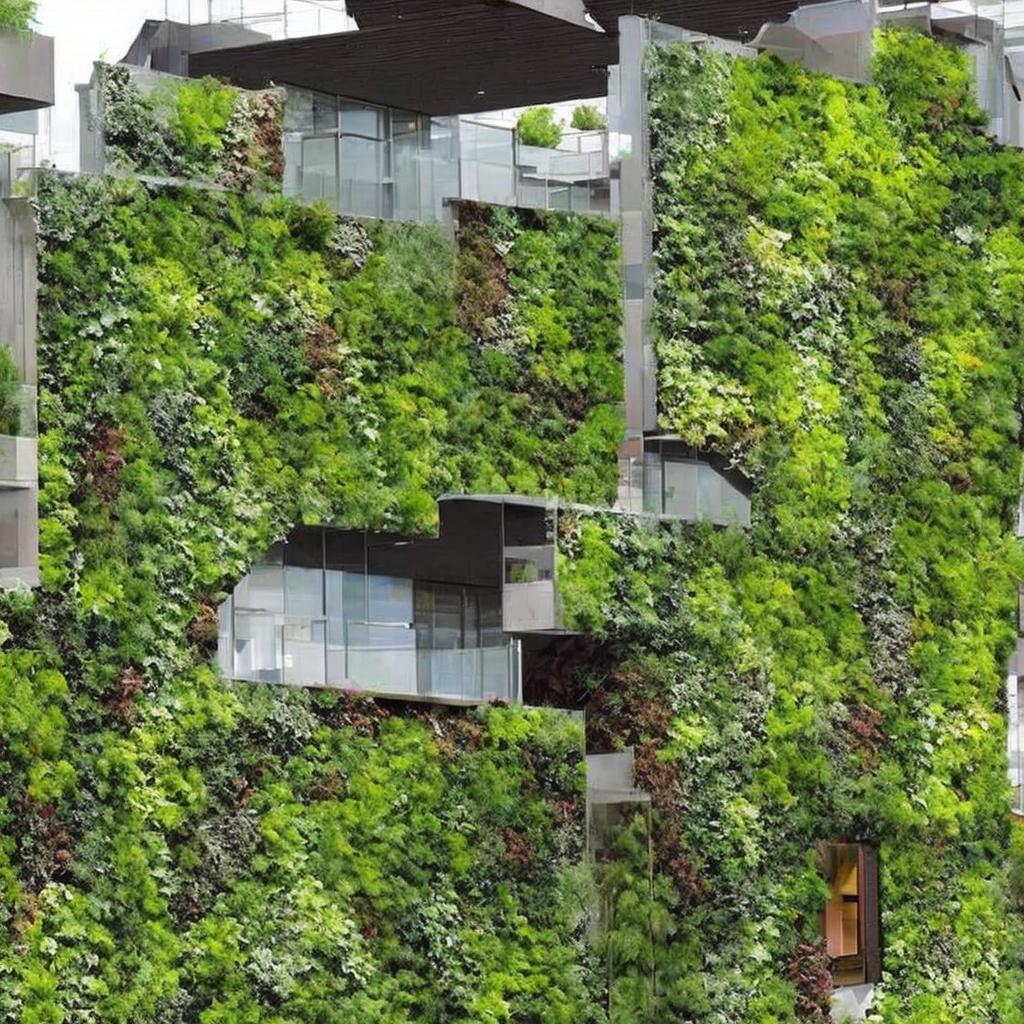
Vertical gardens and green roofs are becoming increasingly popular in India as an environmentally friendly approach to house design. These innovative features not only add aesthetic beauty to a building but also have numerous sustainable benefits.
Vertical gardens, also known as living walls, consist of plants grown vertically on the exterior or interior walls of a building. They help improve air quality by filtering pollutants and releasing oxygen, creating a healthier living environment for residents. Additionally, these gardens act as natural insulation, reducing the need for artificial heating and cooling systems.
Green roofs are another sustainable feature gaining popularity in India’s eco-friendly architecture. These rooftops are covered with vegetation, providing a range of environmental advantages.
Firstly, they assist in rainwater management by absorbing and storing rainfall, thus reducing water runoff and preventing soil erosion.
Moreover, green roofs offer thermal insulation properties that can significantly reduce energy consumption by keeping the building cool during summer months and insulating it during winters.
In conclusion, vertical gardens and green roofs are exceptional additions to sustainable house designs in India. With their ability to enhance air quality, regulate temperature fluctuations, manage water runoff effectively while adding an aesthetic appeal to buildings – these features exemplify how eco-friendly architecture is taking shape in the country’s housing sector.
9. Solar panel installations for environmentally conscious homes
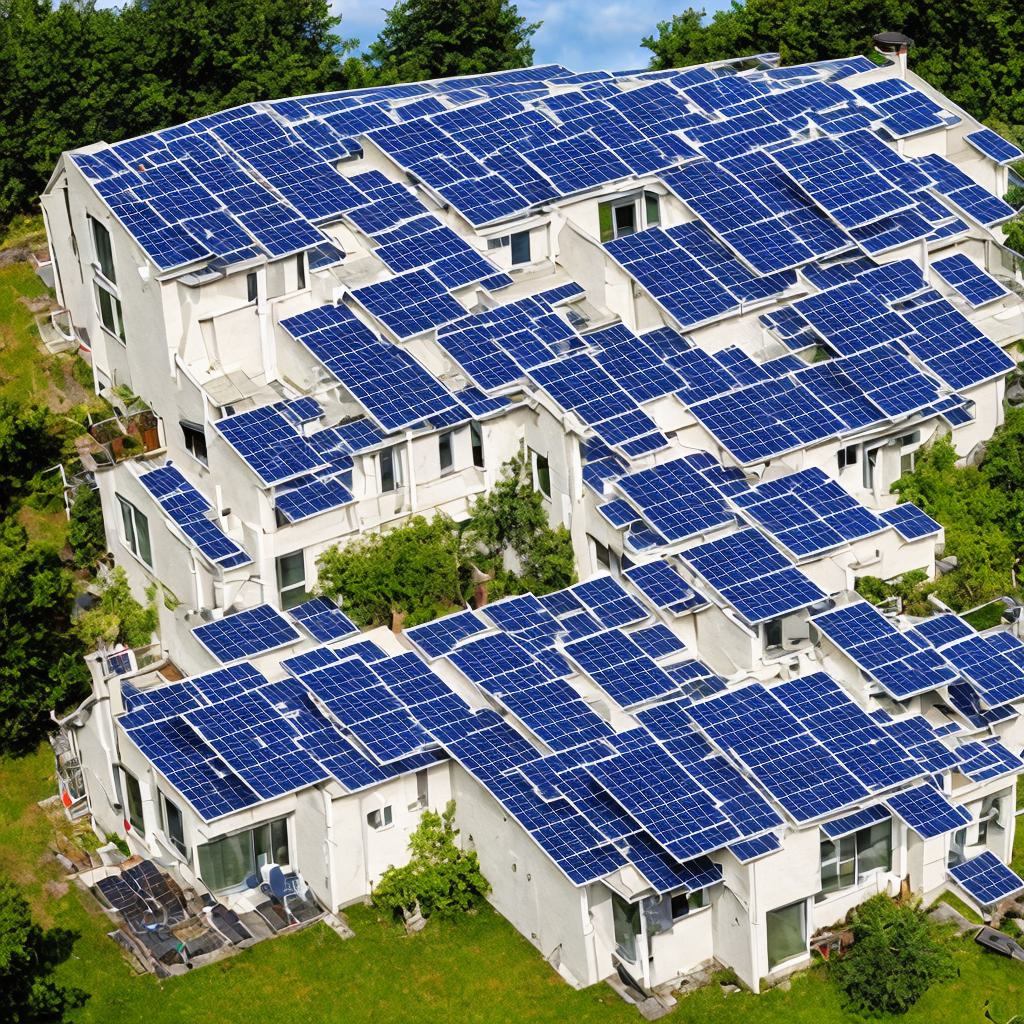
One of the most effective ways to make a home environmentally conscious is by installing solar panels. Solar panel installations have gained popularity in recent years due to their numerous benefits for both homeowners and the environment.
In India, where eco-friendly architecture is on the rise, incorporating solar panels into house designs has become a common practice.
Solar panels harness the power of sunlight and convert it into electricity, providing a clean and renewable energy source for homes.
By installing solar panels, homeowners can significantly reduce their dependence on fossil fuels and decrease their carbon footprint. This not only helps combat climate change but also contributes to a greener and more sustainable future.
Furthermore, solar panel installations offer long-term financial advantages. Although the initial costs may be higher, homeowners can save money in the long run as they generate their own electricity and become less reliant on traditional grid systems.
Additionally, some governments provide incentives such as tax credits or feed-in tariffs for those who invest in solar energy systems.
Overall, opting for solar panel installations is an excellent choice for environmentally conscious individuals seeking sustainable living options in India’s best eco-friendly house designs.
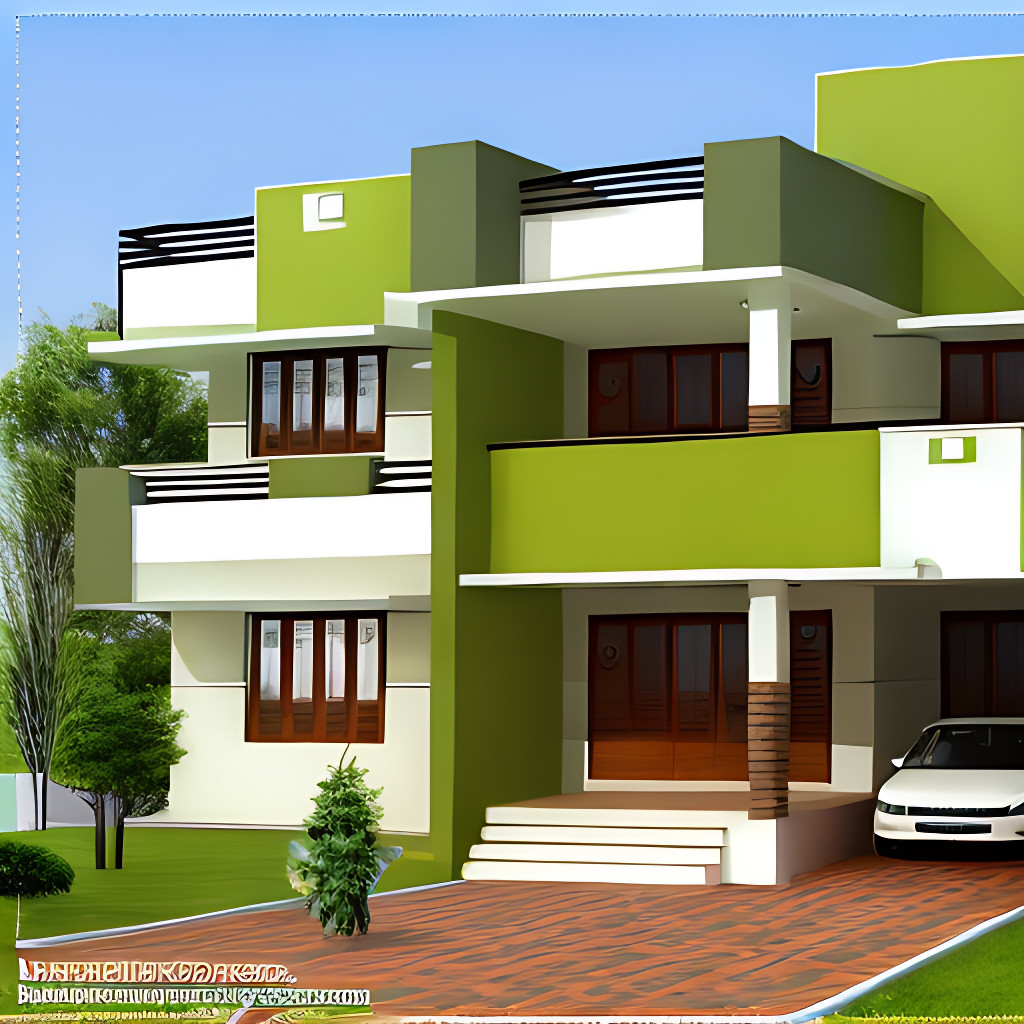
The Final Thoughts
In conclusion, when it comes to finding the best eco-friendly house designs in India, there are various factors to consider. From sustainable architecture and environmentally conscious materials to energy-efficient solutions and renewable energy integration, these homes strive to minimize their impact on the environment and promote a healthier living space.
Through careful research, planning, and collaboration with architects and experts in the field, individuals in India can embrace eco-friendly house designs that not only benefit the environment but also provide a comfortable and sustainable living experience for years to come.
Find Some Eco-Friendly items from here
FAQs
Eco-friendly house designs focus on minimizing the negative impact on the environment by using sustainable materials, efficient energy systems, and waste reduction techniques.
Choosing an eco-friendly house design helps reduce your carbon footprint, saves energy costs in the long run, promotes a healthier living environment, and contributes to preserving natural resources.
You can make your home more energy-efficient by incorporating features like solar panels for electricity generation, proper insulation, energy-efficient appliances, smart thermostats, and using natural light effectively.
While initially it may have a higher upfront cost compared to traditional homes, in the long run, eco-friendly houses save money through reduced utility bills and maintenance costs.
Absolutely! Eco-friendly houses can be designed with various architectural styles to suit your preferences while still incorporating sustainable materials and practices.
Eco-friendly houses generally require regular maintenance similar to any other house. However, they often have durable materials that may require less frequent replacements or repairs.
Yes! With the help of professionals experienced in sustainable renovations, you can implement changes such as adding insulation, upgrading windows, installing solar panels or rainwater harvesting systems to make your existing home more environmentally friendly.
Yes! In India, there are various government initiatives like Pradhan Mantri Awas Yojana (PMAY) and Green Building Certifications like Indian Green Building Council’s (IGBC) Green Homes rating system that offer incentives and recognition for constructing environmentally friendly homes.





